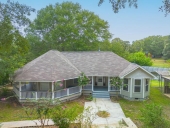Khari Harmony wrote:Hi I'm new here and this is my first post!
I'm not sure if there's an umbrella term for these types of homes. I'm thinking about passive heated houses, cob houses, etc. The drop down bar for choosing a forum had so many building options, I just selected natural building because that seemed all encompassing.
Even if I have to hire a team to help to build this home, I'd still like to know what features to include and things to look out for, what questions to ask in the design process, and everything needed to make it a successful and truly sustainable home.
So... What are you favourite resources (books, organizations, videos) for learning about all things related to building permaculture homes? (And other structures too would be great like greenhouses!)
Thanks!
Hey,
YouTube, anything under 30 minutes.
History documentaries, where people build in historic methods.
google images and Pinterest. (for Ideas)
Tedtalks,
Making friends with people from a diversity of backgrounds.
I find people who live in some of the worse poverty and conditions, not only are inspiring but the innovative ideas they come up with are brilliant!
(this weekend. I watch a youtuber look at a trash city in Egypt, I quickly started googling this place and writing down dot points of things to learn to check out.
Pen and paper, I always carry around with me journal if only kept in the Truck, any words I do not know about I write it down in the Learn column,
If I am sitting and waiting, I will force myself to come up with an invention or improvement to something,
My phone, If I see something interesting while I work as a land Surveyor, I will take a photo.
My father taught me, If you have the chance watch and take notes from tradesman,
I also recommend if you are young, to volunteer, as many men who have lifetimes of tradesman skills in retirement use the skills they learned to help out the community, And being a young man who is fit and willing to give some days towards these projects, You learn skills like metal work, electrical wiring, Masonry skills, Demolition, Painting from people with 30 years of experience, Metal recyclers, Plumbers, Carpenters. The longer the period of time your willing to put in the more you learn. Nothing is beneath you Do anything immediately and without complaint,
Survivalist and indigenous videos and books,
S.A.S survival handbook,
Physics, chemistry, engineering lessons,
I have to Give a shout out to this Amazing Youtuber called The Essential Craftsman,
https://www.youtube.com/channel/UCzr30osBdTmuFUS8IfXtXmg
Steve ramsay wood working for mere mortals,
Has some really Good videos on screws, Do watch,
Matt Estlea,
Amazing lessons on woodworking, well taught, Brilliant stuff,
I also just always keep my eyes open and seek to learn!









